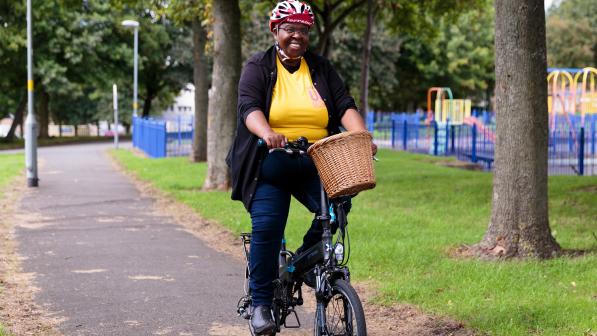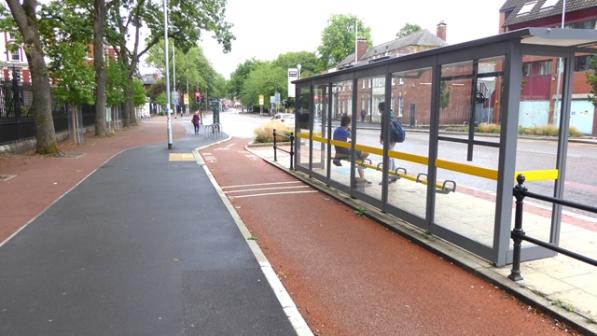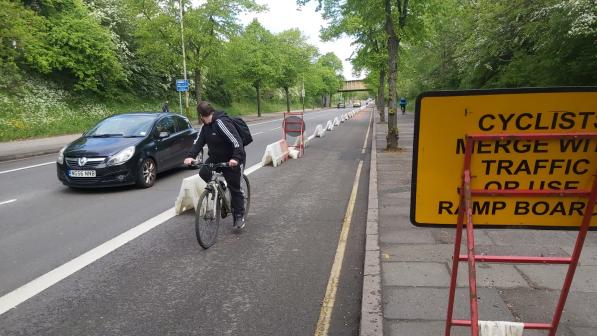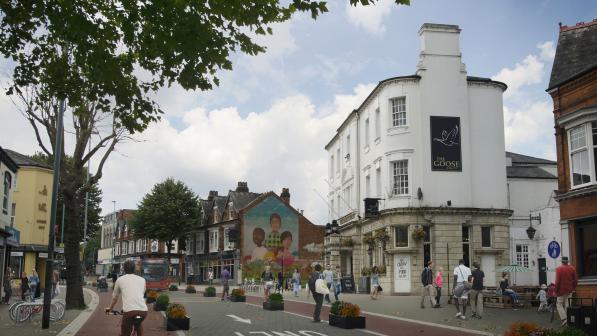The National Cycling Strategy's 25th anniversary: Lessons for today
This morning (9th July 2021), I was one of a panel of witnesses - alongside Chris Boardman - who gave evidence to an inquiry by the All Party Parliamentary Group on Cycling and Walking (APPGCW), into the funding needed to meet the Government's targets for increased cycling and walking, as set out in its first Cycling and Walking Investment Strategy (CWIS1).
During my evidence, I harked back to what happened 25 years ago tomorrow, on 10 July 1996, when the Department of Transport (as it was called then) launched Britain's first ever National Cycling Strategy (NCS - and yes, at that time, 'national' did mean Great Britain).
At the time, it seemed like a momentous day. Then, as now, cycling accounted for less than 2% of trips in Britain, less than 1/10th of Dutch levels. But at last we were going to start catching up!
The NCS set excitingly ambitious targets to double cycling trips by 2002, and to double them again by 2012. That would still only take us to less than a third of Dutch levels of cycle use - but it would at least take us towards German, Belgian, Swedish or Swiss levels. It seemed like a 'cycling revolution' might finally be underway.
Unfortunately, the Government initially provided zero earmarked funding for it. And yes, I really do mean precisely £0.00. Cycling, they argued, was a local mode of transport. So it was up to local authorities to find the funding needed to meet those targets.
Surprise, surprise, cycling in Britain continued bumping along at around 2% of trips - as it has done ever since. So the NCS targets were quietly dropped in 2004.
A slow build-up of funding
The following year, Cycling UK (then CTC) joined forces with Sustrans and the Bicycle Association to propose a new organisation, to be known as Cycling England. Unlike its predecessor body (the National Cycling Strategy Board), Cycling England wouldn't just be a talking shop. It would have a budget, and senior DfT officials indicated that their ministers were likely to agree to an initial annual budget of around £70m. So we presented a £70m annual funding proposal, which the officials took to their Secretary of State.
He gave them just £5m.
Over the next 6 years, Cycling England's annual budget grew, eventually reaching £60m. However it then got axed in 2011, in the new coalition government's 'bonfire of the quangos'. Cycling England consisted of 3 people and didn't even have an office. But it was deemed to be a quango, and hence a terrible waste of money.
Over the following years, the Government came under sustained pressure to increase funding for cycling: from ourselves, our allies, the Times newspaper (who launched a 'Cities fit for Cycling' campaign in 2012) and the All Party Parliamentary Cycling Group (this was before it added "and Walking" to its name). The APPCG's Get Britain Cycling inquiry resulted in calls for spending of at least £10 per person annually, rising progressively to £20).
History repeating itself
Eventually, the Government agreed to make a legal commitment to have a Cycling and Walking Investment Strategy (CWIS). It wrote this commitment into law in 2015, and published its first CWIS (CWIS1) in 2017.
Despite having the word 'Investment' in its name, CWIS1 was still desperately short of funding. But hey, it included bold ambitious targets to double cycling and increase walking by 2025...
"Hang on", I hear you say. "A target to double cycling, without adequate funding? Didn't you say something about that at the start of this blog?"
Yes, history is repeating itself.
But let us now fast forward towards the present day. Last year, Transport Secretary Grant Shapps announced a 5-year allocation of £2bn of earmarked central Government funding for cycling and walking.
This was over 6 times the 5-year allocation that the Government had made in 2017 (to cover the financial years 2016-7 to 2020-1). At an annual average of £400m, it was around 80 times the initial £5m annual budget that Cycling England had been given in 2005.
However, as Cycling UK has repeatedly said, the Government is sitting on evidence which apparently shows that £2bn is still only a quarter to a third of what is needed, if the Government wants to meet its 2017 targets to double cycling and increase walking by 2025.
Awaiting another investment strategy
DfT is now starting to prepare for its 2nd Cycling and Walking Investment Strategy. Strictly speaking, CWIS2 ought to have come out in late 2020 or early 2021, because CWIS1 was due to end in April 2021. But to be fair, DfT missed that deadline for a perfectly understandable reason.
Due to a combination of Brexit and Covid, the Treasury had had to postpone the multi-year Spending Review it was meant to carry out last year, and publish last autumn. It was therefore impossible DfT officials to prepare a multi-year CWIS2, in the absence of any ministerial decisions on what funding would be available for it.
DfT won't now be able to draw up CWIS2 till after this autumn's Spending Review has been completed. But, with CWIS2 therefore expected late this year or early in 2022, it now makes complete sense for the (now renamed) All Party Parliamentary Group to hold another inquiry, 9 years on from its historic 'Get Britain Cycling' report. But this time, it is focusing specifically on the funding.
Net zero and the need for evidence-based targets and funding
In the meantime, the Government is due to publish its Transport Decarbonisation Plan. That too has been much delayed, but it is now due by the end of July, and it may well be out next week.
I will say more next week about the contradictions between the Government's Transport Decarbonisation Plan and its £27bn Roads Investment Strategy (RIS2). Suffice to say that the Government seems to be under real pressure - financially, environmentally and legally - to drop some of its roads spending. And that. of course, could free up a lot of funding for CWIS2 instead - and indeed for public and shared transport, local road maintenance, broadband investment, you name it!
I'll simply observe that the Government cannot go on setting targets by picking brave-sounding numbers out of thin air, and then failing to allocate the funding needed to meet those targets. Those who fail to learn from history, are condemned to repeat it.
Roger Geffen, Cycling UK policy director
For now, I'll simply observe that the Government cannot go on setting targets by picking brave-sounding numbers out of thin air, and then failing to allocate the funding needed to meet those targets. Those who fail to learn from history, are condemned to repeat it.
What we need instead is for the Transport Decarbonisation Plan to set targets for traffic reduction. These in turn must relate to the Government's wider aims to reach 'net zero' by 2050, and to meet national and international targets for clean air, physical activity and so on.
The Scottish Government has set a target to reduce car-kilometres by 20% by 2030. If we were to do that in England, we could then work out which 20% of car-kilometres could most easily switch to something else. That something else could be walking, cycling, public or shared transport, some combination of these, or not travelling at all (e.g. thanks to broadband investment).
The Government could then set evidence-based targets for cycling, walking and so on, which related to its traffic reduction targets and ultimately its 'net zero' targets. Then it could allocate the funding required to meet those targets.
Wow, just think evidence-based targets (rather than numbers plucked out of thin air) and evidence-based funding allocations designed to meet those targets. That would actually be a transport strategy!
England has still never had one of those ...




